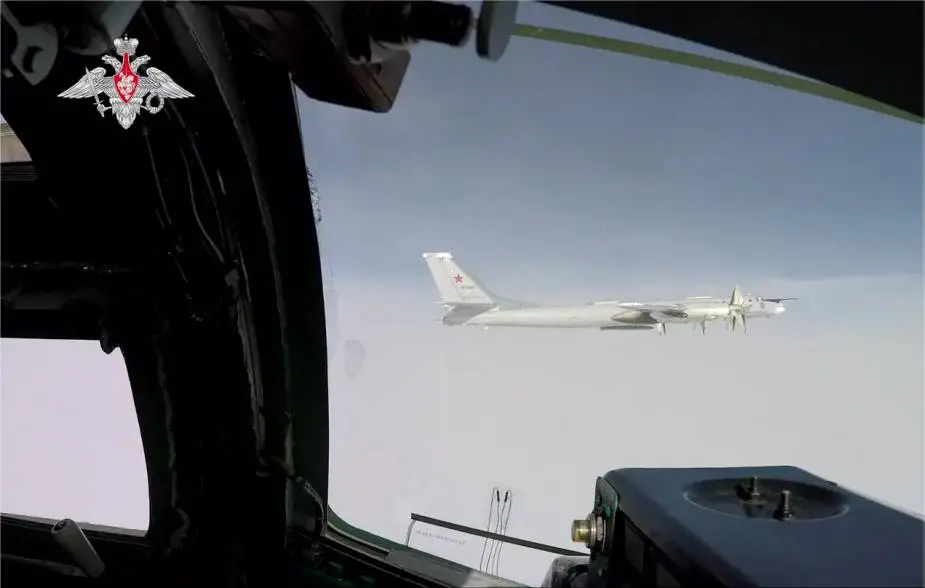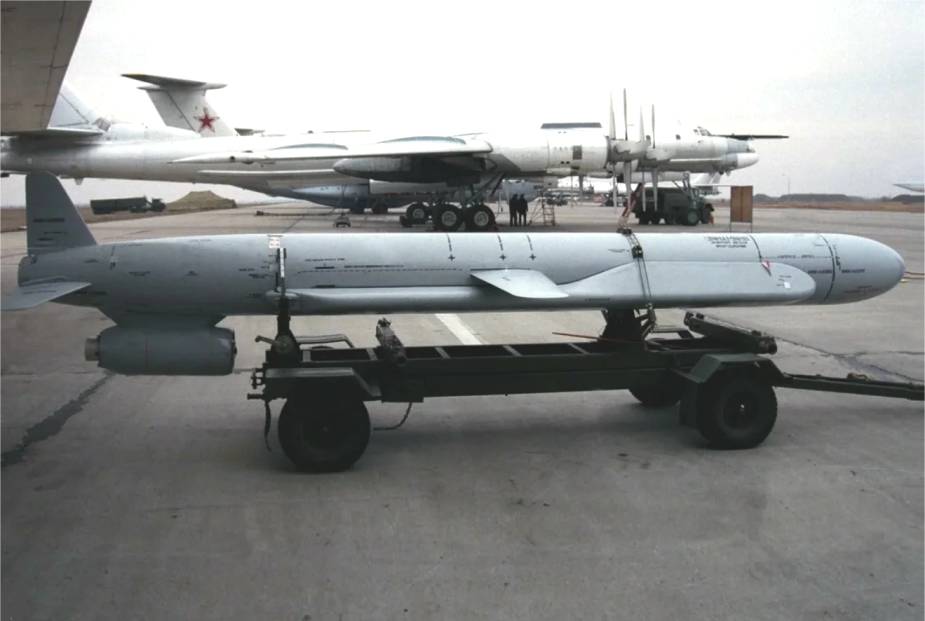According to information published by the British Ministry of Defense on May 3, 2023, between April 28 and May 2, 2023, Russian forces conducted several strikes against Ukraine using Kh-101 and Kh-555 ACLMs (Air Launched Cruise Missiles).
Follow Army Recognition on Google News at this link

A Russian Air Force Tu-95MS bomber aircraft armed with Kh-101 cruise missiles. (Picture source Russian MoD)
Citing information from the British Ministry of Defense, these were the first such strikes for 50 days, with the last prior strikes occurring on 09 March 2023.
The latest strikes were conducted by Russian Air Force long-range strategic bombers including Tu-95 and T-160 aircraft, likely using Kh-101 and Kh-555 ALCMs (Air Launched Cruise Missiles).
Both strikes used smaller numbers of missiles than seen in previous attacks, which is likely due to Russian attempts to rebuild its ALCMs stockpiles. The observed types of facilities damaged by the Russian strikes indicate a possible shift away from targeting Ukraine's electrical power network. Both recent strikes were likely focused on Ukraine's military, industrial, and logistical infrastructure.
On Monday, the Ukrainian Air Force reported that it had taken out three Russian anti-aircraft missile systems and struck almost seven groups of enemy personnel within a 24-hour period. The General Staff of the Armed Forces of Ukraine provided an update on the conflict, stating that their soldiers had intercepted as many as 19 missile attacks aimed at civilian infrastructure.
Throughout May 2, 2023, Russian forces initiated 19 missile strikes, with Ukraine successfully fending off 15 Kh-101 and Kh-555 cruise missiles and a minimum of 17 airstrikes. The Ukrainian military carried out up to 25 counterattacks on Russian positions using multiple launch rocket systems.
In the previous week, Ukraine's Air Force had defended against nearly 30 missile assaults by Russian forces. In response, the Ukrainian military executed six strikes targeting Russian personnel and military equipment concentrations.

Russian Kh-555 Air Launched Cruise Missile. (Picture source Russian Mod)
In the context of the war in Ukraine, cruise missiles have been employed for various reasons. One of the primary factors is their accuracy, as these missiles can strike specific targets with great precision, minimizing collateral damage and maximizing the effectiveness of the attack.
Another significant advantage is their long-range capabilities, which enable them to be launched from a safe distance away from the target. This allows attacking forces to strike without putting their personnel or assets in immediate danger. Furthermore, cruise missiles are designed to fly low and follow terrain features to avoid radar detection, making them difficult to intercept and increasing the chances of a successful attack.
Cruise missiles also offer payload versatility, as they can carry different types of payloads, such as conventional explosives, cluster munitions, or even nuclear warheads. This flexibility enables the attacking force to choose the most appropriate weapon for a specific target. Lastly, the standoff capability provided by cruise missiles allows attacking forces to engage targets from a distance without having to enter enemy airspace. This reduces the risk to pilots and aircraft while still achieving the desired effect on the target.
Overall, in the context of the war in Ukraine, cruise missiles have proven to be a valuable tool for the Russian forces to strike Ukrainian critical infrastructure or military targets accurately and with limited risk to their own forces.
The Kh-555 and Kh-101 are Russian long-range cruise missiles with distinct features and capabilities.
The Kh-555 is an air-launched, subsonic cruise missile derived from the Kh-55, initially developed as a nuclear-tipped missile. With a range of approximately 2,500-3,000 km, the Kh-555 is designed to be launched from strategic bombers like the Tu-95 and Tu-160. It utilizes a combination of inertial navigation systems and terrain contour matching to accurately navigate to its target. The Kh-555 has been modified to carry conventional warheads, making it suitable for non-nuclear strategic operations.
The Kh-101 is a more modern, air-launched, stealth cruise missile with a range of approximately 4,500-5,500 km. It is designed to be compatible with the Tu-95, Tu-160, and the Tu-22M3 strategic bombers. The Kh-101 is characterized by its low observable design, which helps it evade enemy radar systems. It employs advanced guidance systems, including satellite navigation, inertial navigation, and terrain contour matching for improved accuracy. The Kh-101 carries a conventional warhead and is primarily used for precision strikes against high-value targets.















